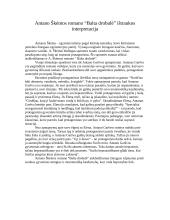

Garšva’s use of poignant and comical émigré slang in his interactions captures the ironies and absurdities of the immigrant’s situation. Narrative, voice and language shift continuously, capturing the anti-hero’s psychological and cultural disorientation - the complexity of experience in a modern world where, in Yeats’ words, “the centre cannot hold.” Like the author’s, Garšva’s frame of reference is vast - quotes from French arias, Kafka and American culture collide with visceral memories of archaic Lithuanian folk song. Strong characters and evocative utterances convey how historical context shapes language and consciousness, breaking down any stable sense of self.Īs in other major modernist works, Škėma uses language and allusion to destabilise.

Using multiple narrative voices and streams, the novel moves through sharply contrasting settings and stages in the narrator’s life in Lithuania before and during World War II, returning always to New York and the recent immigrant’s struggle to adapt to a completely different, and indifferent, modern world. Drawing heavily on the author’s own refugee and immigrant experience, this psychological, stream-of-consciousness work tells the story of an émigré poet working as an elevator operator in a large New York hotel during the mid-1950s. White Shroud (Balta drobulė, 1958) is considered by many as the most important work of modernist fiction in Lithuanian.


 0 kommentar(er)
0 kommentar(er)
